 Petzlover
Petzlover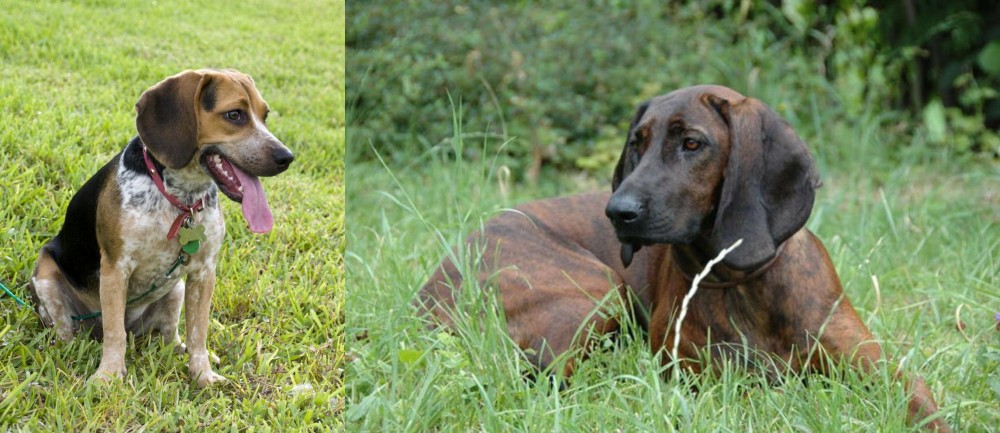 Bluetick Beagle is originated from United Kingdom but Hanover Hound is originated from Germany. Bluetick Beagle may grow 14 cm / 5 inches shorter than Hanover Hound. Bluetick Beagle may weigh 41 kg / 90 pounds lesser than Hanover Hound. Both Bluetick Beagle and Hanover Hound has almost same life span. Both Bluetick Beagle and Hanover Hound has almost same litter size. Both Bluetick Beagle and Hanover Hound requires Low Maintenance.
Bluetick Beagle is originated from United Kingdom but Hanover Hound is originated from Germany. Bluetick Beagle may grow 14 cm / 5 inches shorter than Hanover Hound. Bluetick Beagle may weigh 41 kg / 90 pounds lesser than Hanover Hound. Both Bluetick Beagle and Hanover Hound has almost same life span. Both Bluetick Beagle and Hanover Hound has almost same litter size. Both Bluetick Beagle and Hanover Hound requires Low Maintenance.
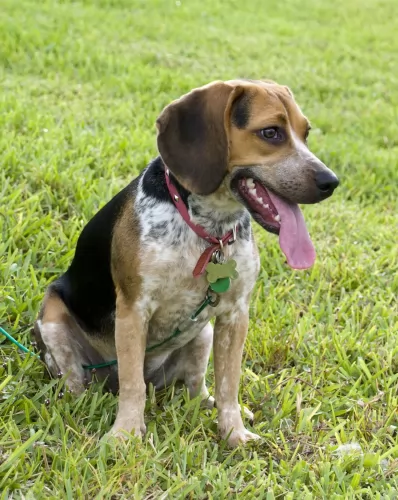 Among the hound group of dogs, there are some ancient breeds. The history of the Beagle and the Bluetick Beagle more specifically is fairly uncertain as breeds as we know them today didn't really develop until the 19th century. It was in the mid-1800s the Reverend Phillip Honeywood established Beagles in Essex, England and American breeders started importing Beagles from England to improve the looks of their own dogs. The breed was developed from a number of breeds and possibly the Bluetick Coonhound had some input into the markings of the Bluetick Beagle.
Among the hound group of dogs, there are some ancient breeds. The history of the Beagle and the Bluetick Beagle more specifically is fairly uncertain as breeds as we know them today didn't really develop until the 19th century. It was in the mid-1800s the Reverend Phillip Honeywood established Beagles in Essex, England and American breeders started importing Beagles from England to improve the looks of their own dogs. The breed was developed from a number of breeds and possibly the Bluetick Coonhound had some input into the markings of the Bluetick Beagle.
Today the American Kennel Club recognizes many colors and color combinations in Beagles. with white, tan and black being the more common color. Beagles can also sport ‘markings’ such as blue and red freckles or ticks. If there are black ticks, it can be referred to as blue-ticked.
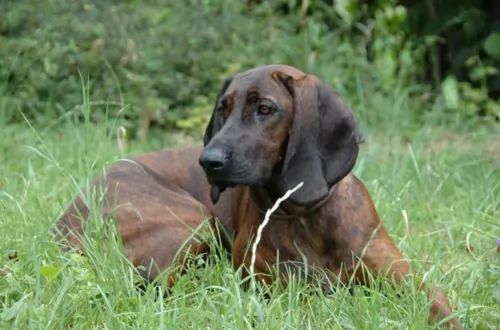 Sometimes referred to as a Hanoverian Hound, this dog dates way back to the 17th century in Germany.
Sometimes referred to as a Hanoverian Hound, this dog dates way back to the 17th century in Germany.
This dog breed continues to be fairly rare today and has always been used as a hunting and tracking dog. It is believed the dog comes from bloodhounds dating back to medieval times. The dog isn’t recognized by the AKC but he is a member of the Scenthound group.
 The Bluetick Beagle is a small sized hunting dog. As part of the Hound group of dogs, he has an excellent sense of smell. He has always been used as a hunting dog, and it is why this particular dog is a popular choice for law enforcement agencies – it’s that keen sense of smell.
The Bluetick Beagle is a small sized hunting dog. As part of the Hound group of dogs, he has an excellent sense of smell. He has always been used as a hunting dog, and it is why this particular dog is a popular choice for law enforcement agencies – it’s that keen sense of smell.
He is lean and compact with muscular legs, a broad head, fairly long floppy ears and a broad chest. His coat is short-haired and smooth and its the short blue coloration in his coat sets the Bluetick Beagle apart from the regular Beagle.
The Blue Tick Beagle can have a bit of a stubborn streak, but be that as it may, he still responds well to training and socialization. Alert, he has an amicable nature, and this is what makes this breed such a great family pet He’ll get on well with children in the house as well as with other pets.
The Blue Tick Beagle isn’t an aggressive dog breed. He is lively and playful and full of energy and will require you taking him on walks, runs in the park and lots of games at home.
He loves the companionship of his human family and can’t just be left in the back yard on his own for long periods of time. He can suffer with separation anxiety and also become bored and then he starts with long, mournful howls.
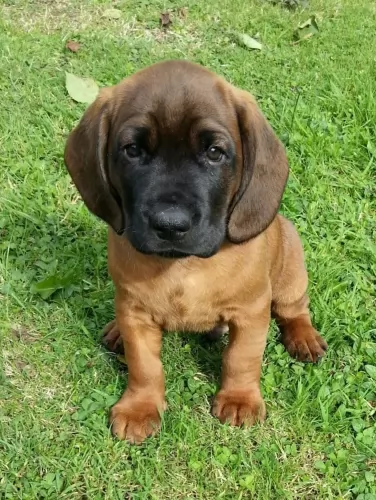 This is a sturdy, well built dog with a short, smooth, dense coat which is a reddish-brown color with brindling.
This is a sturdy, well built dog with a short, smooth, dense coat which is a reddish-brown color with brindling.
He is a well built, deep chested dog standing at about 50 – 55cm in height and weighing 48-53cm. He has the typical dark brown, soulful eyes of the Hound dog with long, broad, floppy ears.They usually have black noses, he has a deep chest, strong, straight legs and long, tapering tail.
Calm and gentle, the Hanover Hound is a loyal dog who bonds closely with his human family. When you socialize him he gets along well with children.
He is a hunting dog and loves nothing more than to be following some scent. You can call out his name, but he will not likely take notice, so determined is he to track down his prey, being known for his superb sense of smell.
His hunting instincts are strong and this means that you won't often find him being kept essentially as just a pet – they are first hunting dogs and then pets. Nonetheless, as already suggested, the Hanover Hound is more than capable of forming a strong bond with his human family, making a good family pet.
He is aloof and wary with strangers and this makes him a good watchdog. It is important to have him trained and socialized as then he becomes obedient and amicable when you need him to be like that around friends and family.
 Your Blue Tick beagle is an active, cheerful dog and he makes a good companion for adult or child. He is fairly adaptable and can happily fit into a home in the city- or country. A Blue Tick Beagle doesn’t want to be left alone day after day, so think about your work commitments before you buy buy your Blue Tick and leave him alone.
Your Blue Tick beagle is an active, cheerful dog and he makes a good companion for adult or child. He is fairly adaptable and can happily fit into a home in the city- or country. A Blue Tick Beagle doesn’t want to be left alone day after day, so think about your work commitments before you buy buy your Blue Tick and leave him alone.
Being a hound, although he is gentle and amicable, he can also be stubborn which means he will require some patient training. Because he is a scenthound, he is inclined to catch an aroma and want to go after it, so you’ll need a well fenced garden to keep him in.
Other than that when he is with you, he makes a dedicated and loving companion.
 The Hanover Hound is an intelligent dog breed that responds well to training and socialization. They are dedicated hunting dogs but they are loyal and loving to their human family.
The Hanover Hound is an intelligent dog breed that responds well to training and socialization. They are dedicated hunting dogs but they are loyal and loving to their human family.
He will require an owner who is active and on the go while being firm and consistent with his treatment of him.
When socialized, he makes a good friend of children too. Keep him busy, exercise him, provide him with good food and consistent love and attention and he'll make you a devoted hunting companion and friend.
 Beagles are healthy dog breeds, and with good care, can enjoy an average lifespan of between 12-15 years. Like many other dogs, the Blue Tick beagle is more prone to a number of medical conditions, and more so as it ages. It is essentially a hardy breed that won’t require any particular special care, but common dog problems such as hip dysplasia and skin allergies will need to be watched.
Beagles are healthy dog breeds, and with good care, can enjoy an average lifespan of between 12-15 years. Like many other dogs, the Blue Tick beagle is more prone to a number of medical conditions, and more so as it ages. It is essentially a hardy breed that won’t require any particular special care, but common dog problems such as hip dysplasia and skin allergies will need to be watched.
There are always some health concerns with every dog breed that every dog owner needs to be aware of. Dog with floppy ears such as what the Blue Tick Beagle has will always be prone to ear infections. The ears will need to be kept clean but you can’t just go prodding around in a dog’s ear as you could damage the ears. A visit to the veterinarian will clear up any ear problems.
This particular condition - prolapse of the gland of the nictitating membrane – is important to clear up quickly as it could lead to more serious problems. The longer the third eyelid gland is problematic, the more irritated and inflamed it becomes.
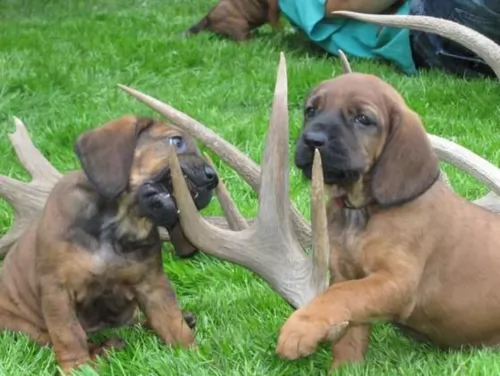 Capable of living to between 10 and 14 years of age, the Hanover Hound, like many other dogs, may well be prone to some of the more common dog illnesses there are.
Capable of living to between 10 and 14 years of age, the Hanover Hound, like many other dogs, may well be prone to some of the more common dog illnesses there are.
Because of his long, floppy ears, he will typically be more prone to developing otitis externa. This is why it is important to be checking your long, floppy-eared dog regularly and cleaning his ears to avoid wax- and dirt build-up and infection. Chronic ear infections will have to be treated by your vet.
You'll recognize the illness when you see your pet shaking his head often and scratching at his ears.
This is a genetic orthopedic disorder that affects many dogs and will eventually cause lameness. Hip dysplasia is due to malformed hip joints.
Eye diseases and problems with the eyelid can cause your pet a lot of discomfort as this is when an eyelid rolls in and then rubs against the eye.
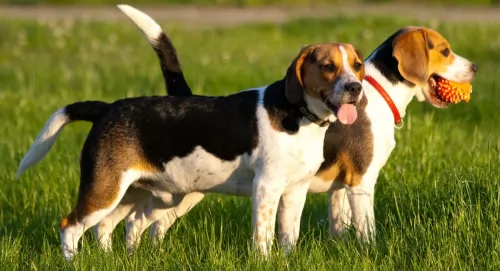 A good, nutritious diet will help your Blue Tick Beagle steer clear of ill health. He is an energetic breed so will require either home prepared food or commercially manufactured dog food with the right mix of vitamins and minerals to keep his energy levels up.
A good, nutritious diet will help your Blue Tick Beagle steer clear of ill health. He is an energetic breed so will require either home prepared food or commercially manufactured dog food with the right mix of vitamins and minerals to keep his energy levels up.
As mentioned, your BlueTick can be prone to hip dysplasia and skin allergies so a supplement which includes omega 3 is an excellent choice for your dog’s overall health. Make sure to include some raw meat into your dog’s diet and always ensure a constant supply of fresh water.
Your Bluetick Beagle isn’t a huge shedder with his short-haired coat, but he will need to be brushed at least twice a week to keep his coat in tip-top condition and to remove all those loose hairs. Bathing a dog is never encouraged as it removes the dogs natural oils, but of course there are always exceptions when a dog will require a bath.
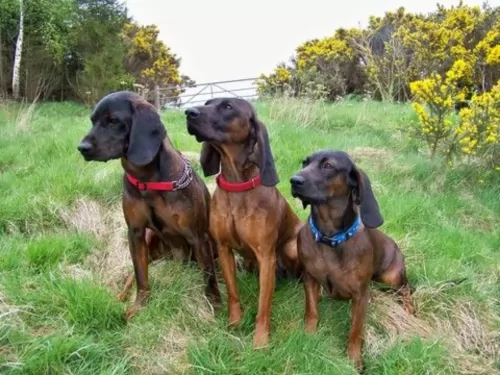 The Hanover Hound is a hunting breed so he won’t easily adapt to life in the city with a tiny garden. He will need a large garden or a farm to run around in.
The Hanover Hound is a hunting breed so he won’t easily adapt to life in the city with a tiny garden. He will need a large garden or a farm to run around in.
He is a hunting dog that loves to put his nose to the ground and to follow a scent. This is a dog breed which will need to be provided with a good amount of exercise every day to ensure his happiness and health.
As a large dog breed, you want to be sure to be feeding him a high quality food. It is always a good idea to add in some home-made food to his kibble. Read the packaging carefully of commercial manufactured dog foods and make sure you get food that is geared towards large, active breed dogs.
Add in cooked food such as cooked chicken, vegetables or brown rice and pasta and remember to include some raw meat into his diet from time to time.
Before dogs were domesticated they would eat raw meat as opposed to harmful grain based commercial dog foods of today. Benefits of adding in some raw meat from time to time include healthier skin, more energy and shinier coats and eyes. Make sure your pet has a constant supply of fresh, cool water.